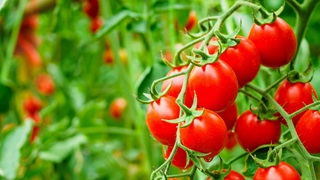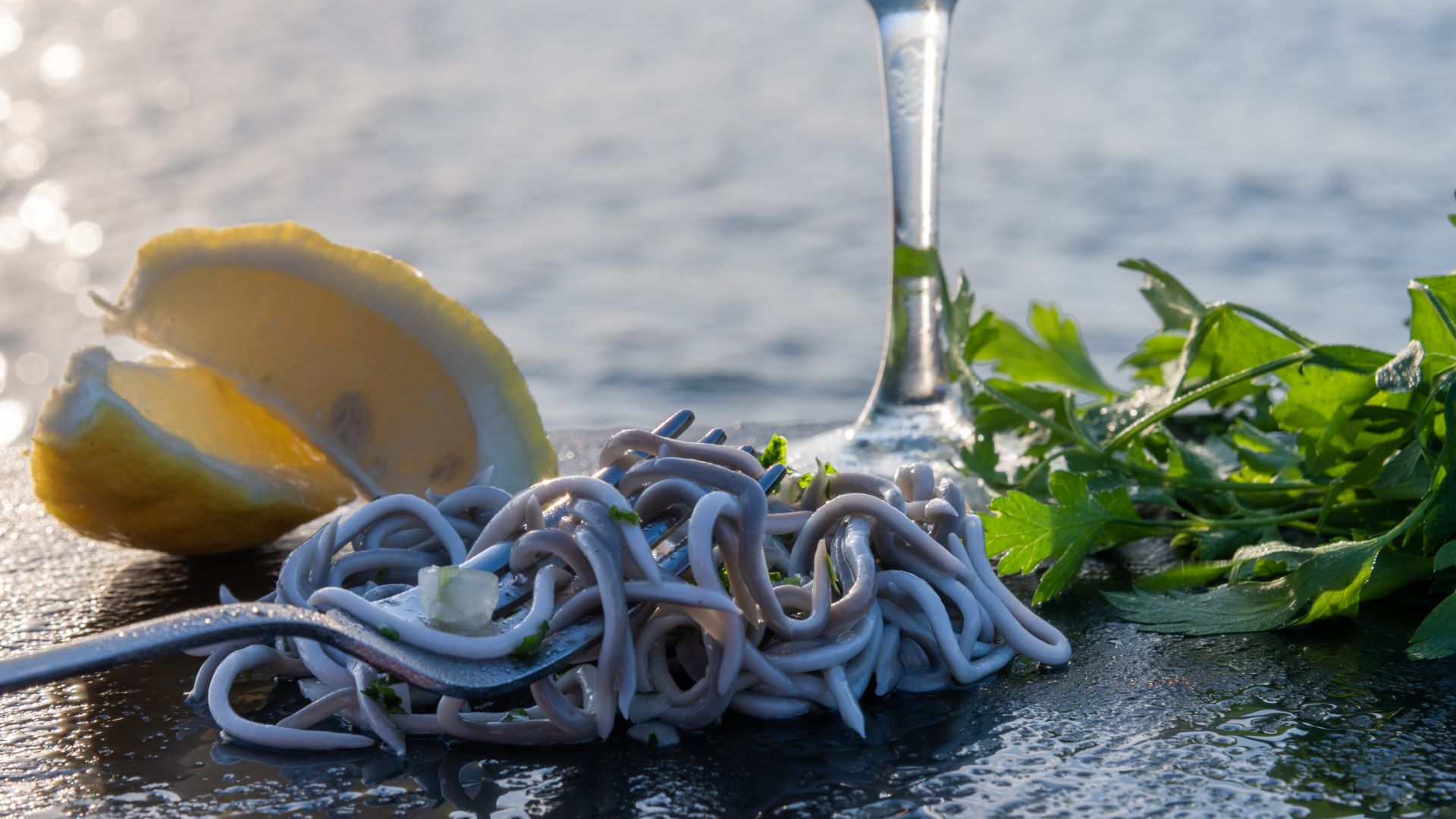
Eating out
Over a lifetime—with Bina Shah | Issue 21 | 2022


The most juvenile form of elver, the glass eel, is a highly prized luxury at Christmas in the north of Spain. It can sell for a price in excess of €5,000 a kilo (which is, admittedly, an awful lot of elver). The arrival of these tiny fishling, some 70 mm in length, onto the Christmas table is the end of a tale of enormous but—for the fish—futile endeavour. The only benefit is for the fisherman and the consumer.
The European eel is a catadromous fish: one that lives the majority of its life in fresh water but returns to salt water to breed. It is most commonly found in the muddy depths of European rivers that flow into the Atlantic Ocean. When fully mature, at about seven years of age, the eel undergoes an extraordinary cellular mutation, allowing its respiratory mechanism to adapt to salt water. It then migrates to the Sargasso Sea, an area of the Atlantic Ocean off Bermuda, some 5,000 kilometres away. There, the eels will mate, the female will lay her eggs and the adults will die.
The eggs, or larvae, float to the surface of the ocean, from where, over a period of years, currents will carry them back to the rivers their parents departed from. They arrive every year in November—in time for Christmas—and undergo their first metamorphosis, from larvae to glass eel.
The glass eels are not easy to catch. Fishing communities have developed a variety of techniques involving primitive trawling machinery, effectively dragging a sieve along the river bed.
Some glass eels escape the sieve. These are the ones that then swim upriver, over rocks and dams, fighting the river currents pushing them back to the sea, until they reach the muddy beds where this life story began and where they will mature. The cycle begins again.
Nobody understands why eels undergo these serial metamorphoses. Or the significance of the Sargasso Sea. Or how they mate. Or why they return to the rivers their parents departed from. It is a tremendously complex journey for such a rudimentary animal. It is perhaps the mystery of that life-cycle—and the seasonality of the glass eel—that make them so prized.
Glass eels are the only juvenile fish whose capture is permitted in the European Union. The European eel is a critically endangered species, its fishing subject to stringent quotas (which have driven its price up exponentially) and exports are banned. They are popular in certain communities in the Asia Pacific region and a thriving smuggling business has developed. In February 2020, a Malaysian national, Gilbert Khoo, was convicted of attempting to smuggle 200 kg of glass eels from Spain to Hong Kong, via his fish farm in Gloucestershire. This year, during a stopover of a flight from Portugal to Malaysia, Dutch customs intercepted seven suitcases containing more than 300,000 glass eels, secured in plastic bags full of salt water, as if they were goldfish won at a fair. The illegal trade in glass eels has an estimated annual value of €3 billion.
If you are in the north of Spain at Christmas, I would avoid elvers. Having formed no muscle, they are completely tasteless and have the same texture as rice noodles. If you must, you can buy an equally tasteless surimi-based equivalent (gulas rather than angulas) for a fraction of the price.
© Norton Rose Fulbright LLP 2025